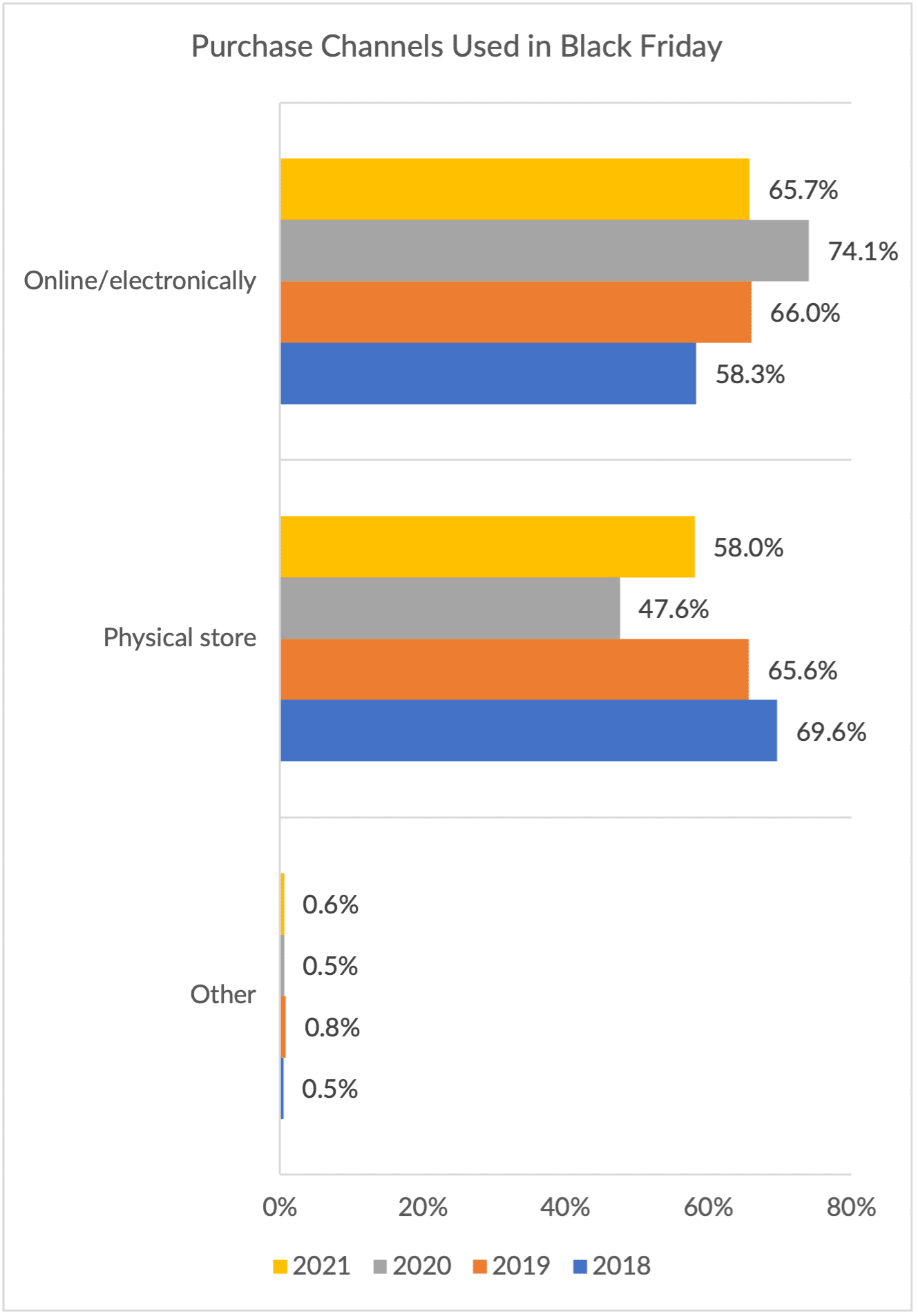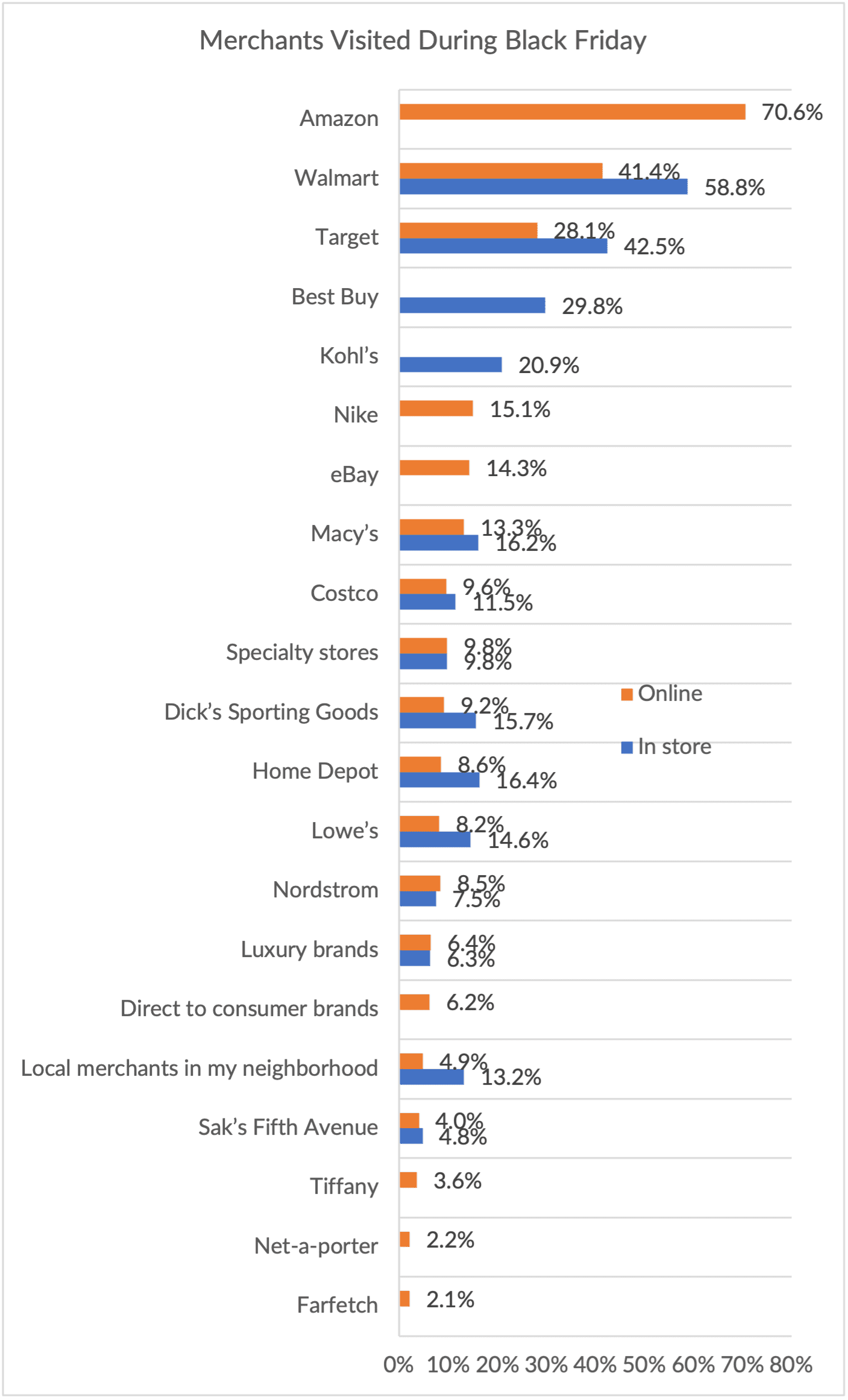As Rolling COVID Disaster Turns to Omicron, Online Shopping Never More Important for Retailers

Having toiled through three waves of the coronavirus; adapted to lockdowns, store restrictions and changing mask mandates; watched the vaccine rollout decline into protests; and witnessed the emergence of the Alpha, Beta, Gamma, Delta; and now omicron virus variants, there has been one constant for beleaguered retailers: the importance of having a robust eCommerce operation.
As much as brick-and-mortar retail shops and malls have enjoyed a series of temporary rebounds over the past year and a half by cooped-up consumers seeking the familiarity and allure of physical stores, each advance has been met with another new and unforeseen hurdle.
This past weekend was no exception, as the kickoff of the much-anticipated Black Friday holiday season delivered retail results that were better than last year’s constrained Christmas, but still below pre-pandemic levels. They also showed a growing bias for online buying, as the eCommerce share of the overall pie continues to rise.
 According to a PYMNTS survey of over 2,000 U.S. consumers on Friday (Nov. 26) and Saturday (Nov. 27), 65% of consumers made online shopping purchases, compared to 74% a year ago. Part of that short-term year-on-year decline is the result of the fact that holiday shopping started earlier than usual this year due to supply chain challenges and inventory concerns, but also because the in-store shopping scene last Thanksgiving was so bad.
According to a PYMNTS survey of over 2,000 U.S. consumers on Friday (Nov. 26) and Saturday (Nov. 27), 65% of consumers made online shopping purchases, compared to 74% a year ago. Part of that short-term year-on-year decline is the result of the fact that holiday shopping started earlier than usual this year due to supply chain challenges and inventory concerns, but also because the in-store shopping scene last Thanksgiving was so bad.
On the brick-and-mortar front, the survey showed a 10-percentage-point rebound this year, with 58% of respondents saying they did their buying in-store. While that was expected due to a healthier overall environment (albeit one that is deteriorating by the day), the physical store Black Friday tally was still below the 65% and 70% levels reported in 2019 and 2018 respectively.
By that comparison, the data show that eCommerce buying levels were even with 2019 and above where they were in 2018.
Delving in deeper, the PYMNTS research also showed a shift in online shopping at several specific omnichannel merchants that saw substantial numbers of shoppers making purchases at their websites last weekend.
Over 40% of consumers said they visited Walmart.com, while 28% said they went to the digital side of Target as well. Other notable share mixes for digital could be seen at Macy’s, which was nearly a 50-50 split with a 13% to 16% online-to-in-store ratio, with consumers reporting similar ratios at Costco, Dick’s Sporting Goods and Nordstrom.
In short, in all but the digitally native Amazon, consumers were almost as likely to shop online as they were to head into some of the biggest brand name retailers.

One thing that is keeping people at least browsing online first is the availability of inventory, where consumers want to confirm items are in stock before heading out to the store.
“I think where we sit today is that in-stocks in the U.S. are basically right about where they were in the pre-COVID era,” David Clark, CEO of Amazon Worldwide Consumer, said in a televised interview on CNBC Monday morning (Nov. 29). “So overall in the U.S., we are basically where we were in 2019 before we went into COVID.”
While Amazon is uniquely positioned to benefit from the ongoing digital shift for shopping, the latest COVID crisis has only underscored the importance of having a seamless online experience in place as the closing chapter of the coronavirus keeps getting bumped back.
